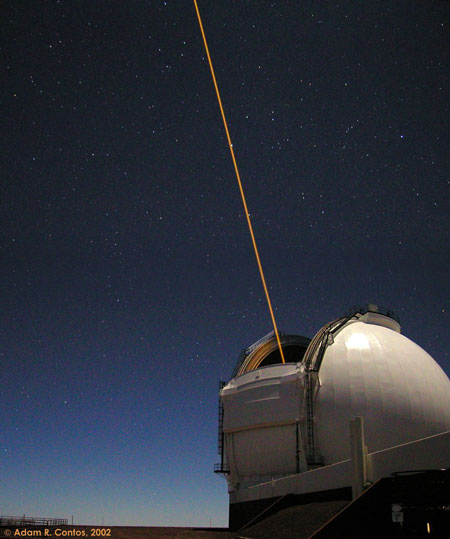Credit & Copyright: Adam Contos
(Ball Aerospace)
Explanation:
What do you get when you combine one of the world's most
powerful telescopes
with a powerful laser?
An artificial star.
Monitoring fluctuations
in brightness of a genuine bright star can indicate how the
Earth's atmosphere is changing,
but many times no bright star exists in the direction where
atmospheric information is needed.
Therefore, astronomers have developed the ability to create an
artificial star where they need it -- with a
laser.
Subsequent observations of the
artificial laser guide star can reveal information so
detailed about the blurring effects of the Earth's atmosphere
that much of this blurring can be removed by rapidly flexing the mirror.
Such adaptive optic techniques allow high-resolution
ground-based observations of
real stars,
planets,
nebulae,
and the early universe.
Above, a laser
beam shoots out of the
Keck II 10-meter telescope on Mauna
Kea in
Hawaii
in 2002, creating an artificial star.
1999 2000 2001 2002 2003 2004 2005 2006 2007 2008 2009 2010 2011 2012 2013 2014 2015 2016 2017 2018 2019 2020 2021 2022 2023 2024 2025 |
Январь Февраль Март Апрель Май Июнь Июль Август Сентябрь Октябрь Ноябрь Декабрь |
NASA Web Site Statements, Warnings, and Disclaimers
NASA Official: Jay Norris. Specific rights apply.
A service of: LHEA at NASA / GSFC
& Michigan Tech. U.
|
Публикации с ключевыми словами:
telescope - laser - телескоп - лазер
Публикации со словами: telescope - laser - телескоп - лазер | |
См. также:
Все публикации на ту же тему >> | |
